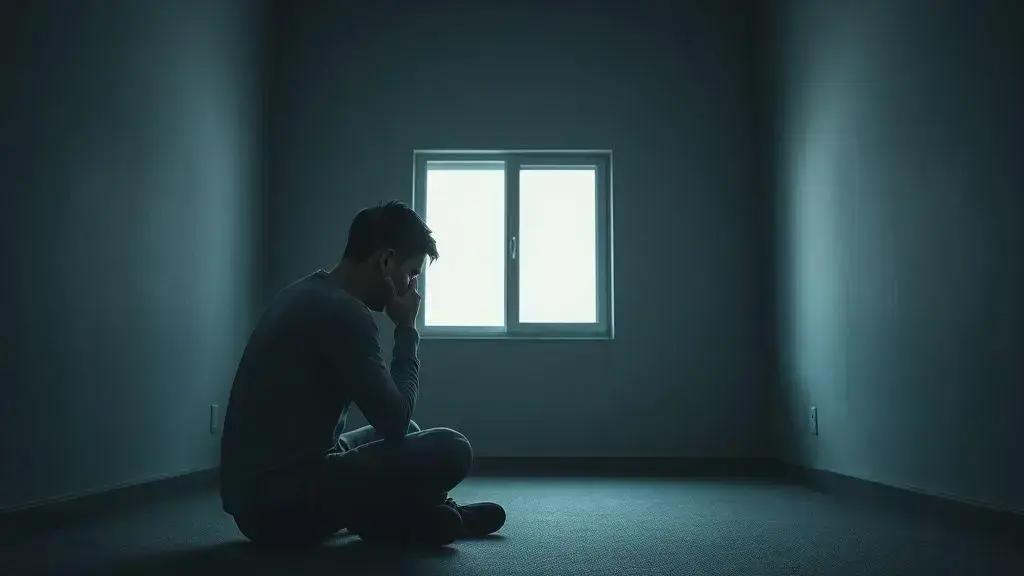Post stress disorder is a mental health condition caused by trauma, characterized by symptoms like flashbacks, anxiety, and difficulty regulating emotions, requiring early recognition and treatment for effective management.
Post stress disorder can sneak into your life after intense trauma, changing how you think and feel. Ever wondered why some experiences haunt us? Let’s explore together what this disorder really means and how it affects people’s daily lives.
See today's top solution for balance & energy
Gentle guidance trusted by our community.
Table of Contents
what is post stress disorder and how it develops
Post stress disorder is a mental health condition that can develop after experiencing or witnessing a traumatic event. These events might include accidents, natural disasters, violence, or sudden loss. The disorder affects how a person feels, thinks, and reacts long after the event has passed.
When trauma occurs, the brain’s natural response is to protect itself by creating strong memories related to the event. However, for some people, these memories stay vivid and distressing, causing ongoing stress and anxiety. This condition is not just about feeling sad or scared; it involves intense reactions like nightmares, flashbacks, or avoiding places and people that remind them of the trauma.
How it Develops
After trauma, the brain’s stress response system can become overactive. Chemicals like adrenaline and cortisol flood the body, preparing it for danger. Over time, these responses can become stuck, making it hard for a person to feel safe or calm. Post stress disorder develops when this heightened alertness continues for weeks, months, or even longer.
Not everyone who experiences trauma will develop this disorder. Factors like genetics, the severity of the trauma, support systems, and previous mental health conditions all play a role. Early symptoms can include irritability, trouble sleeping, or feeling anxious around certain situations.
Understanding that post stress disorder results from the brain trying to protect itself helps reduce stigma and encourages seeking help. Treatment options like therapy and medication can support the brain in returning to balance and improve quality of life.
common symptoms and signs to watch for
Post stress disorder presents through a range of symptoms that affect how a person thinks, feels, and behaves. These signs often appear after a traumatic event and may last for weeks or longer if left untreated.
Common symptoms include flashbacks, where the person feels like the trauma is happening again. Nightmares related to the event can disrupt sleep, leading to fatigue and irritability. Avoiding places, people, or activities that remind someone of the trauma is also typical.
Emotional and Physical Signs
People with this disorder often experience intense feelings of fear, sadness, or anger. They may feel numb or detached from others, making relationships difficult. Physically, symptoms like a racing heart, sweating, or feeling on edge are common due to heightened anxiety.
Memory and concentration problems can also occur, affecting daily tasks and work performance. Some individuals feel constantly alert or easily startled, which can be exhausting.
Behavioral Changes
Changes in behavior may include increased irritability or outbursts of anger. Withdrawal from social situations and loss of interest in previously enjoyed activities are frequent. These signs might be subtle but can impact quality of life significantly.
Recognizing these symptoms early allows for timely help. If you or someone you know shows these signs after trauma, it’s important to consult a healthcare professional.
how trauma triggers post stress disorder in the brain
Trauma affects the brain in powerful ways that can lead to post stress disorder. When a traumatic event occurs, the brain’s alarm system, known as the amygdala, becomes highly active. This area processes fear and danger signals, preparing the body to respond quickly.
The Role of the Amygdala and Hippocampus
The amygdala signals the body to release stress hormones like adrenaline and cortisol. These hormones create a state of heightened alertness. Meanwhile, the hippocampus, responsible for memory and learning, can become impaired during trauma. This disruption may cause fragmented, confusing memories of the event.
When the hippocampus and amygdala don’t work well together after trauma, the brain struggles to process and store memories properly. This can cause flashbacks and intrusive thoughts to appear suddenly and vividly.
Prefrontal Cortex and Regulation
The prefrontal cortex, which controls reasoning and emotional regulation, often becomes less effective in people with post stress disorder. This means the brain finds it hard to calm down from stress or control fear responses, making symptoms worse.
Overall, trauma can cause an imbalance in brain areas responsible for memory, fear, and emotion regulation. This imbalance is a key factor in why post stress disorder develops and why symptoms persist long after the traumatic event.
Studying these brain changes helps researchers develop effective therapies aimed at restoring balance and reducing symptoms.
coping strategies that can help manage symptoms
Managing symptoms of post stress disorder often requires a combination of strategies to ease the impact on daily life. Many people find relief by learning coping skills that help reduce stress and improve emotional health.
Practical Coping Strategies
Techniques such as deep breathing, mindfulness, and meditation can calm the nervous system. These practices help you focus on the present moment, making it easier to handle anxiety and intrusive thoughts.
Physical activity is another helpful tool. Regular exercise releases endorphins, which can boost mood and reduce stress. Even a short walk or gentle stretching can make a difference.
Building Support Networks
Talking with trusted friends or family members can provide comfort and reduce feelings of isolation. Support groups for people with similar experiences offer understanding and practical advice.
Healthy Lifestyle Habits
Maintaining a regular sleep schedule, eating balanced meals, and avoiding alcohol or drugs can improve overall well-being and lessen symptoms.
For some, creative outlets like art, music, or writing provide a safe way to express difficult emotions. These activities can promote healing and self-awareness.
While these coping methods can be effective, it’s important to seek professional help if symptoms interfere with daily life. Therapies such as cognitive behavioral therapy (CBT) and medication may be necessary for lasting relief.
when and how to seek professional help

Knowing when to seek professional help for post stress disorder is important for effective recovery. If symptoms are severe, persist for several weeks, or interfere with daily activities, it’s time to contact a healthcare provider.
Signs to Watch For
Difficulty functioning at work or school, intense feelings of hopelessness, suicidal thoughts, or substance abuse are key signs that professional support is needed. If coping strategies are not enough, a therapist or doctor can provide specialized care.
Types of Professional Help
Treatment often begins with a mental health professional, such as a psychologist or psychiatrist. Therapies like cognitive behavioral therapy (CBT) are effective in helping patients change negative thought patterns and manage symptoms.
In some cases, medication may be prescribed to reduce anxiety or depression associated with the disorder. Combining therapy and medication often leads to the best results.
How to Find Help
Start by asking a primary care provider for a referral or searching for licensed therapists specializing in trauma and PTSD. Online directories and support groups can also help locate experienced professionals.
Early treatment can prevent symptoms from worsening and improve long-term outcomes. Don’t hesitate to reach out when you or a loved one struggles to cope.
real stories: living with post stress disorder
Living with post stress disorder can be a difficult journey, but hearing real stories helps others understand the experience and find hope. Many people face challenges such as flashbacks, anxiety, and isolation, yet they also discover ways to cope and rebuild their lives.
Personal Experiences
Some individuals describe feeling trapped by memories that suddenly invade their thoughts without warning. Others mention struggling with everyday tasks, like going to work or socializing, because of fear or fatigue.
Support from friends, family, or support groups often plays a crucial role. Shared experiences provide comfort and reduce the feeling of being alone in the struggle.
Recovery and Growth
Many people find meaning and strength through therapy, creative outlets, and self-care routines. Progress takes time, and setbacks are normal, but small victories help build confidence and resilience.
Stories also highlight the importance of patience and professional guidance. Living with post stress disorder is not the same for everyone, making personalized care essential.
By sharing real stories, awareness grows, stigma decreases, and more people may feel encouraged to seek help and support.
Understanding and Managing Post Stress Disorder
Post stress disorder is a serious condition that affects many people after trauma. Recognizing the signs and knowing how the brain reacts can help in finding the right support.
Coping strategies and professional help play key roles in managing symptoms and improving daily life. Real stories show that recovery is possible with patience, care, and support.
If you or someone you know struggles with these challenges, don’t hesitate to seek help. With the right tools and understanding, living a full and meaningful life is within reach.
FAQ – common questions about post stress disorder
What is post stress disorder?
Post stress disorder is a mental health condition triggered by experiencing or witnessing traumatic events, causing lasting emotional and physical symptoms.
What are common signs of post stress disorder?
Common signs include flashbacks, nightmares, avoidance of reminders, anxiety, irritability, difficulty sleeping, and feeling detached from others.
How does trauma affect the brain in post stress disorder?
Trauma triggers an overactive amygdala which processes fear, impairs the hippocampus related to memory, and reduces the prefrontal cortex’s ability to regulate emotions.
What coping strategies can help manage symptoms?
Techniques like mindfulness, deep breathing, regular exercise, building strong support networks, healthy lifestyle habits, and creative outlets can help manage symptoms.
When should someone seek professional help?
If symptoms last for weeks, interfere with daily life, cause intense distress, or involve suicidal thoughts, it’s important to seek professional treatment promptly.
What treatments are available for post stress disorder?
Effective treatments include cognitive behavioral therapy, medication to reduce anxiety or depression, and other therapies tailored to individual needs.
See today's top solution for balance & energy
Gentle guidance trusted by our community.






